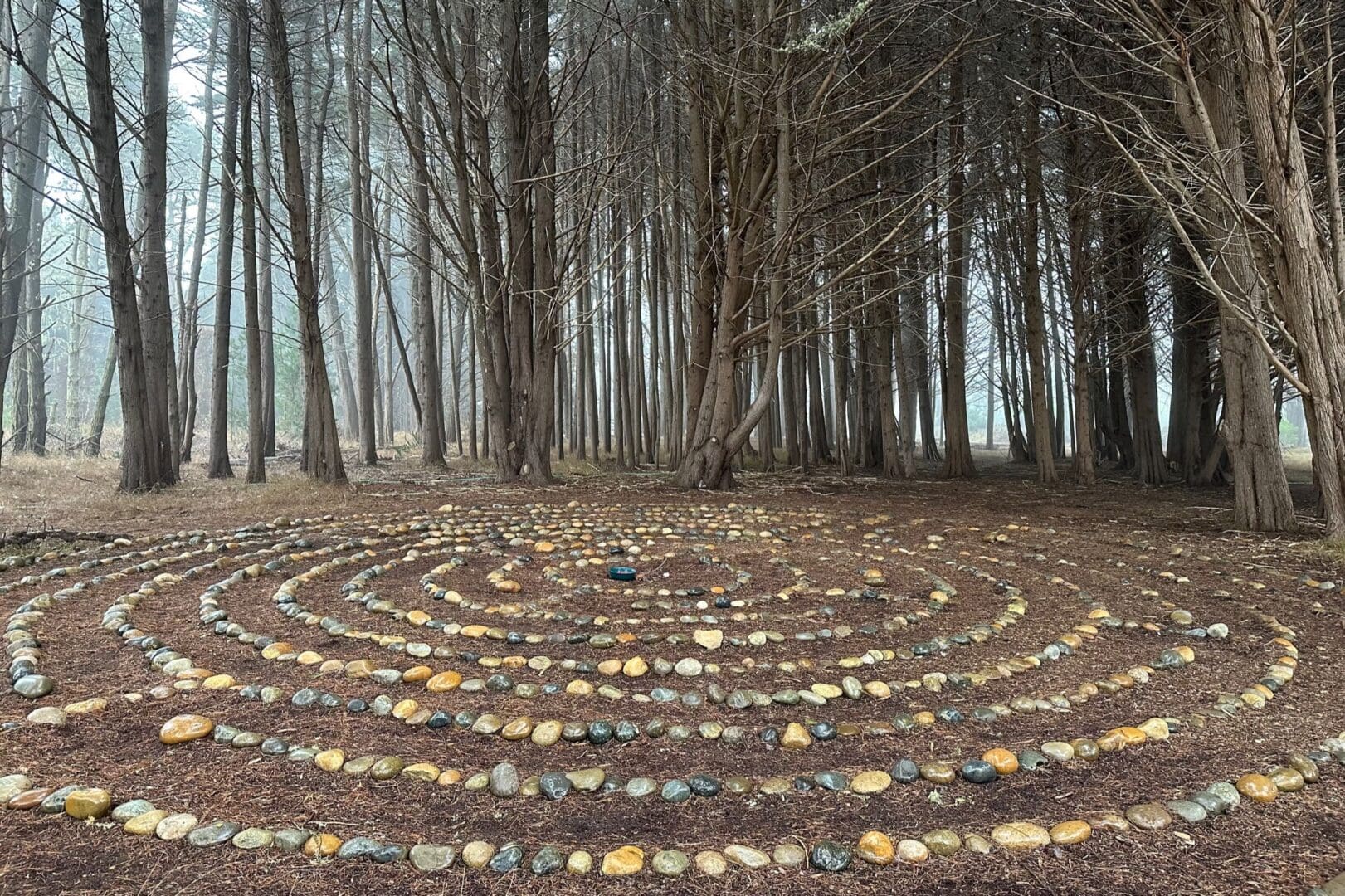Some preliminary notes
A friend suggested to me the other day that reverence might be at the heart of our work. She proposed that there is a relationship between reverence and resilience. I asked what she meant by reverence. She said that she meant reverence for life. Then she said she also meant reverence for whatever each of us holds to be the organizing principle of the universe.
In one view, reverence for life and reverence for the organizing principle in the universe are fundamentally the same. Embracing that identity requires a belief that the universe is a compassionate, or friendly place – which mystics affirm but some physicists deny. Albert Einstein was an exception among physicists. He is supposed to have said the following:
I think the most important question facing humanity is, ‘Is the universe a friendly place?’
For if we decide that the universe is an unfriendly place, then we will use our technology, our scientific discoveries and our natural resources to achieve safety and power by creating bigger walls to keep out the unfriendliness and bigger weapons to destroy all that which is unfriendly.
But if we decide that the universe is a friendly place, then we will use our technology, our scientific discoveries and our natural resources to create tools and models for understanding that universe. Because power and safety will come through understanding its workings and its motives.
There are other physicists who do not consider the universe actively friendly but who are astonished by how finely tuned to support of intelligent life our universe is. This fine-tuning of the universe to life is called the anthropic principle, which comes in “weak” and “strong” flavors. The weak flavor simply notes that we could only exist in a universe finely tuned to support life. The strong flavor suggests that the laws of our universe themselves – and not just the environment they create – are part of the fine-tuning to intelligent life that our universe confers. (See previous post, The Grand Design)
In other words, we can feel reverence toward life on earth, and a further level of reverence for the organizing principle of the universe because the universe itself, actively or passively, is exquisitely tuned to support life. That we live and can only live in such a universe is surely reason for a universal reverence.
But how does this reverence relate to resilience? Just as with reverence, we must ask what we mean by resilience. Resilience is shorthand for a concept that is replacing sustainability among people who think about these things. Sustainability is the concept that was originally endorsed by the Brundtland Commission – formally the World Commission on the Environment and Development, convened by the United Nations in 1983 under Chair Gro Harlem Brundtland. The Commission sought to encourage all nations to develop guidelines that would chart paths to sustainable development.
The Brundtland Commission envisioned a “grand bargain” in which the Global South gave up the effort to develop along Western lines in return for the financing and technology from the North that enabled them to follow ecologically sustainable paths to development.
The great effort to achieve this goal led to the Earth Summit. But the North never provided the financing and technology needed to help the South follow a sustainable path to development – though the United States may well have spent much more on our Middle East wars. In any case, Western style development is now underway on a massive scale in the Global South. Climate change is clearly irreversible, and many other forms of damage to life from chemicals, nuclear accidents, and the dissemination of genetically modified organisms and nanotechnologies are all surging forward. Increasingly, those who care about life speak about resiliency instead of sustainability. The question is how to make human communities more resilient to the inevitable changes that lie before us. Hence the profound relevance of the question about the relationship of reverence and resilience.
Let us examine some of the different forms of resilience. Life on earth is surely resilient. Even if we humans destroy ourselves, life itself will very likely continue.
At the same time, we must admit that human resilience has often come at the expense of the resilience of much of the rest of life on earth. This form of death-dealing human resilience is surely not the resilience for which my friend feels reverence. No, the kind of resilience that she prizes is one in which humanity finally proves itself a wise and skillful gardener of the creation. And this form of resilience, worthy of our reverence, is an act of consummate collective intelligence.
James McNeill was the secretary-general of the Brundtland Commission. He once remarked to me that there were four human futures: business as usual, descent in chaos, achieving sustainability, or becoming artificial people on an artificial planet. This is, of course, simply a heuristic device – a teaching tool for thinking about the future. But it has stuck with me ever since. The real future, I have come to see, is not any of these four scenarios in pure form, but some combination of all four. To some degree, business as usual continues. To some degree we sink into chaos. To some degree we achieve sustainability. And unquestionably we are also, to some degree, becoming artificial people on an artificial planet.
But the truly curious thing is that in the deep sense of the word artifice, achieving a sustainable future – a resilient future worth of reverence – is the most artificial of all possible futures. Each of the other three futures moves forward without any effort on our part. They just happen. But Rene Dubos (the French scientist and a leading member of the Brundtland Comission) proposed that the earth is now ineluctably our garden, and our only choice is between gardening wisely or badly. To be good gardeners of the earth requires the highest skill in artifice, for a garden is a collaboration between man and nature that, done well, enriches the lives of both.
If we move on now to the specific matter of resilient human communities, one of the things we know from public health research is that people tend to be healthier in every way if they have strong support networks. A second thing we know is that people are healthier if they are active participants in a religious or spiritual community. These two circles – strong social support and active engagement in a religious or spiritual community – overlap but are not identical. To engage in either or both forms of community is an expression of reverence for life. To engage in a religious or spiritual community is to proclaim a commitment to an organizing principle of the universe. Both are good for your physical, emotional, and mental health. Both, in other words, promote both individual and collective resilience.
But is the added benefit of engagement in religious or spiritual communities excluded for those with fundamentally secular, or scientific, or nature-loving spirits? My guess is that it is not. My guess is that those with any form of deep engagement with the universe that involves an active commitment to wisdom, compassion, and service to life reap the benefits of the resilience that comes with these commitments.
The challenge comes when we look more deeply at what reverence for life means. My friend Don Michaels once asked me whether we should be equally reverent toward the HIV virus, malaria, rabbits, chickens and people? If we are equally reverent toward all life forms, how do we make choices when asked to choose among life forms? Do we oppose medical treatments for people with infections or HIV so as not to destroy those life forms? Surely not – unless we regard people as a plague on life and support our collective demise.
Most of us, at the end of the day, might invoke the complexity of different life forms as a way of prioritizing their value. We might say we feel reverence for all forms of life, but we prioritize the survival of polar bears, apes and people over less complex life forms. It is uncomfortable for many who think in these terms to be asked to prioritize. But we do prioritize among life forms, consciously or unconsciously, with almost every step we take. That means – if we want to privilege reverence and resilience as core values for our time – that either we feel more reverence for some life forms than for others or (and I prefer this) we are equally reverent toward the whole creation but we recognize that in our actions we must prioritize the well-being of some life forms over others.
My friend’s intuition that reverence and resilience are fundamentally related is, I believe, correct. My understanding of reverence – for life and for the organizing principle of the universe – is that we can only truly know reverence by observing the fruits that flow from it. And the fruits that flow from reverence for life require choices that involve prioritizing some life forms over others. The wisdom traditions recognize both compassion and lawfulness a core dimensions of the universal light. Both are forms of reverence for life. The first creates abundance, and the second ensures that the forms of abundance that survive are congruent with natural law. Our reverence is ultimately for both.



